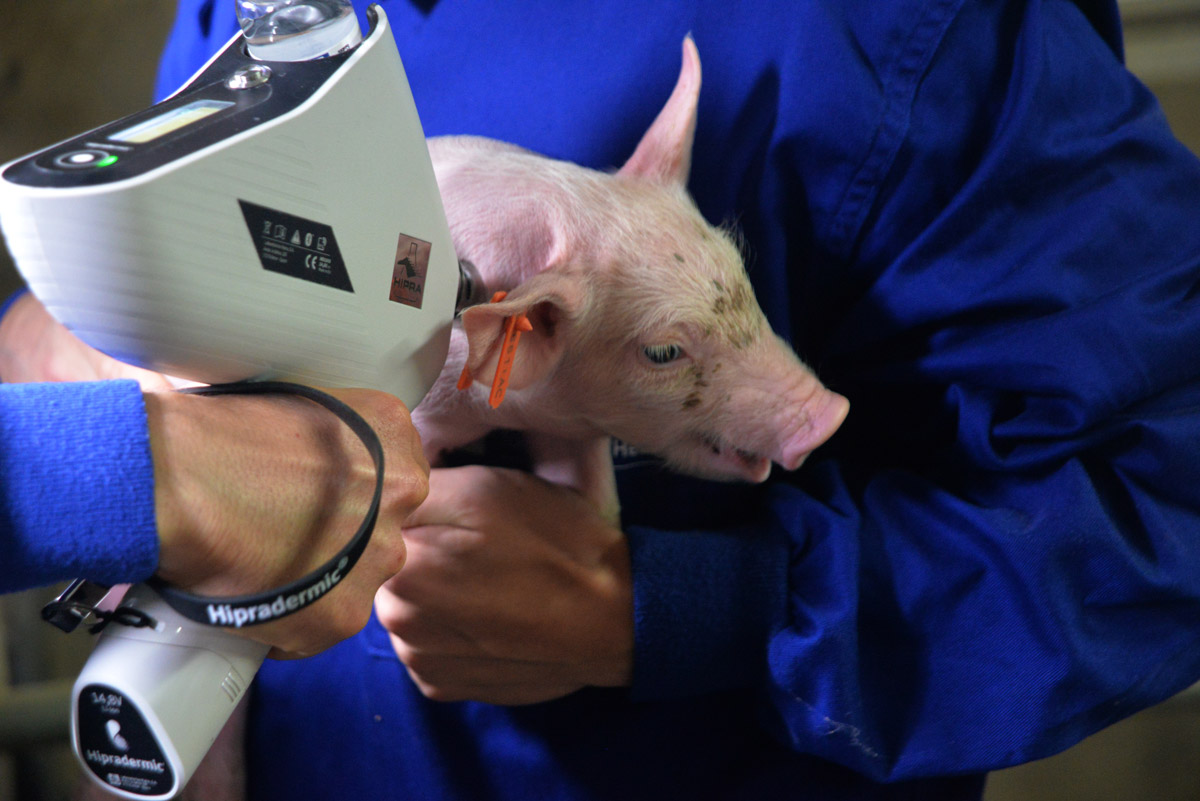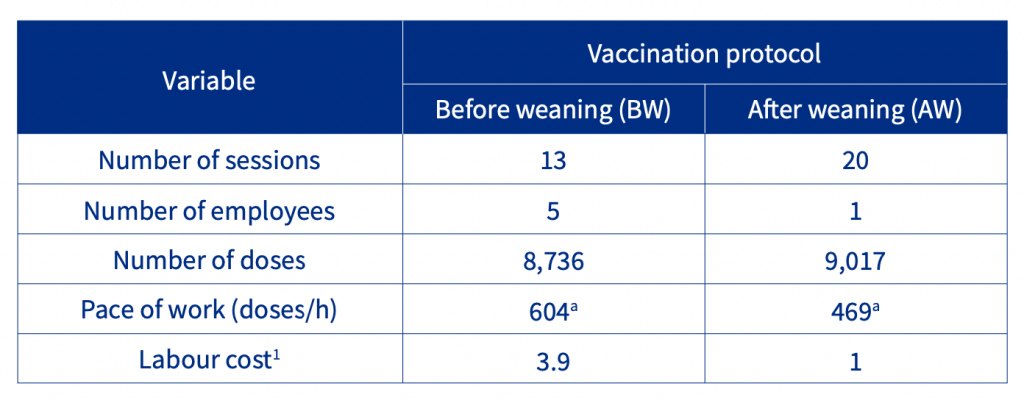
Analysis of pace of vaccination and labour cost in two different protocols of intradermal vaccination
Porcine circovirus type 2 (PCV2) is a small, non-enveloped member of the family Circoviridae. The virus is ubiquitous in domestic swine and causes wide range of syndromes collectively referred to as porcine circovirus associated diseases (PCVAD) 1,2. Mycoplasma hyponeumoniae is one of the smallest free-living procaryotic microorganisms and induces enzootic pneumonia, a disease characterised by coughing, significantly decreased feed efficiency and poor growth performance 3,4.
Immunisation of piglets against both pathogens has become one of the most important procedure in swine production 5,6,7. Moreover, development of needle-free systems enable swine producers to administer vaccines without exposing pigs to stressful intramuscular injection. Other features of the system include increased work safety and convenience.
Introduction
The objective of our study was to compare pace of work and labour costs between two protocols of intradermal vaccination with Mhyosphere® PCV ID (Laboratorios Hipra, Amer, Spain), applied using Hipradermic® 3.0 (Laboratorios Hipra, Amer, Spain) before or after the weaning.
Materials and methods
The study was carried out in 2021 during 8 consecutive weeks in northern Poland in 2 farms using different PCV2 and M. hyponeumoniae vaccination protocols in 6 kg DanBred piglets: 2 days before (BW), or 1 day after weaning (AW). The total number of pigs immunised BW and AW was 8,736 and 9,017, respectively.
All animals were reared under conditions meeting the requirements of Council Directive 2008/120/EC of 18 December 2008, laying down the minimum standards for the protection of pigs. Due to obvious technical limitations related to the construction of farrowing pens (one litter in one pen, presence of a sow, and farrowing rails blocking a direct access to piglets running on the other side of a sow), the BW team consisted of 5 employees, i.e. 4 people handling suckling piglets in 2 neighbouring farrowing pens, and 1 man standing outside and operating the device. In the farm using AW protocol (with approximately 30 weaned piglets in each pen) the same tasks were completed by 1 person equipped with the device mounted in a bracket.
The data regarding pace of work were collected in real time by Hipradermic® 3.0 using commercial software (HIPRAlink® Vaccination Laboratorios Hipra, Amer, Spain). The statistical difference in pace of vaccination was analysed using t-test (R software v4.0.3, R Core Team).
Results
The BW team needed 13 sessions to vaccinate 8,736 animals at the pace of work equal to 604 doses/h, while the AW team used 20 sessions to immunise 9,017 piglets, achieving 469 doses/h (table 1). Even though the pace of vaccination was significantly higher in the BW protocol (P=0.008), the total labour cost per applied dose was 3.9 higher than the value noticed in the AW system.

Table 1. Comparison of results obtained during intradermal vaccination of piglets against PCV2 and M. hyponeumoniae using different protocols.
1 Labour cost is expressed as a ratio of total cost of manpower needed to apply one dose of the vaccine using two different protocols; (a) superscripts indicate statistically significant differences (P ≤0.05)
Discussion and Conclusion
Our data indicate a high effectiveness of both vaccination strategies in terms of proper manpower utilisation; however, due to obvious technical limitations related to the specific infrastructure of typical commercial sow farms, vaccination after weaning seems to be the most profitable in terms of labour costs calculated per one applied dose of the vaccine.
References
1. Alarcon P et al. 2013. Prev Vet Med 110:88-102.
2. Segales J et al. 2012. Virus Res 164:10-19.
3. Chae 2016. Vet J 212:1-6.
4. Vicca J et al. 2003. Vet Microbiol 97:177-190.
5. Karuppannan A et al. 2017. Viruses 9:99
6. Segales J et al. 2009. Vaccine 52:7313-7321.
7. Maes D et al. 2021. Vet Res 52:67.

